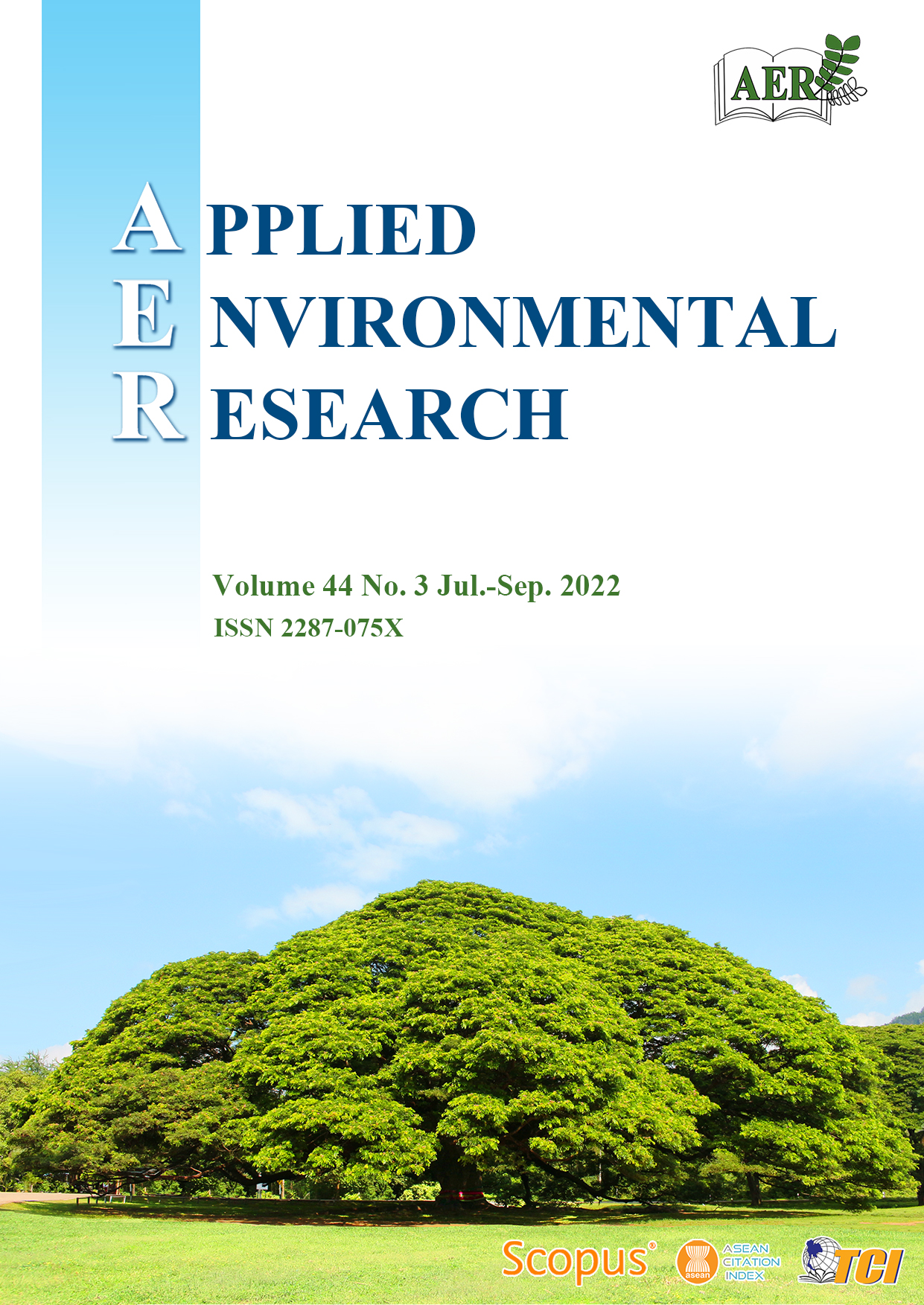Spatial Distribution of Bioavailable Metal Concentrations and Total Metal Concentration-depth Relationship along the Sediment Profile within Phuket Bay
Main Article Content
Abstract
Heavy metals in coastal sediments can adversely affect human health and the environment. The distribution and metal bioavailability of Pb and Zn in 21 sediment samples collected from Phuket Bay, Phuket, Thailand using the first-two steps of sequential extraction proposed by the Standards, Measurements and Testing programme (known as BCR) was determined. The results showed that Pb formed weak complexes contributing up to 11.2% to 33% of its total concentration (1.7 to 7.5 mg kg-1) in the first fraction (BCR1), while Zn in the BCR1 fraction ranged from 4.9% to 9.9%. The results suggest that Pb could easily enter the food chain and the main cause of heavy metal contamination is related to local anthropogenic activities and effects of urbanization in the region, such as the ferry terminal, boatyards, and other maritime activities. Meanwhile, the enrichment factors of the metals showed minor to moderately severe enrichment. The metal concentration-depth relationship along the sediment profile showed metal concen-tration in each layer of the sediment core ranging from 45.4 to 88 mg Zn kg-1 and from 12.7 to 44.5 mg Pb kg-1. Based on the changes in heavy metal accumulation in the sediment core, and the calculated the enrichment factor versus depth, these allowed us to understand the historical variability in pollutant linked to past activities in Phuket Bay.
Article Details

This work is licensed under a Creative Commons Attribution-NonCommercial 4.0 International License.
Published articles are under the copyright of the Applied Environmental Research effective when the article is accepted for publication thus granting Applied Environmental Research all rights for the work so that both parties may be protected from the consequences of unauthorized use. Partially or totally publication of an article elsewhere is possible only after the consent from the editors.

